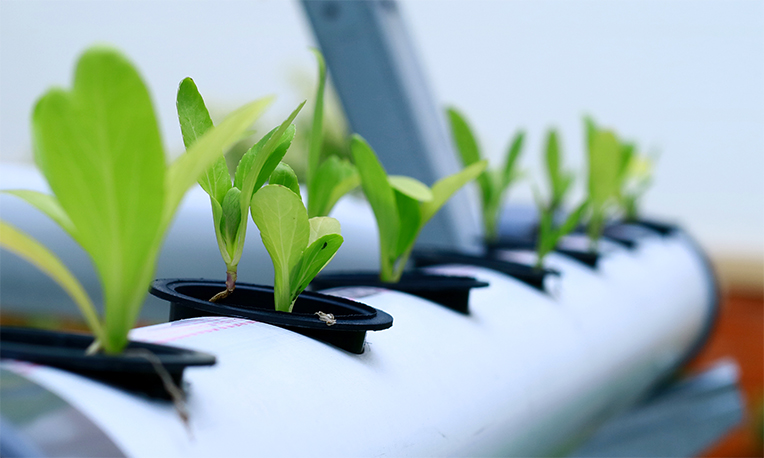Are you looking to master the art of germinating seeds for your hydroponic system? You’ve come to the right place! In this article, we’ll share the top 10 tips on how to germinate seeds for hydroponics, ensuring a healthy and successful garden. Follow these easy steps and watch your seedlings thrive.

Table of Contents
1. Choose the Right Seeds
Selecting seeds suitable for hydroponics is essential to your garden’s success. By choosing seeds that are specifically bred for hydroponic systems, you’re already taking a significant step in learning how to germinate seeds for hydroponics.
Look for seed suppliers who specialize in hydroponic gardening and offer detailed information on the germination and growth requirements of each seed variety. By investing in high-quality seeds, you can optimize your chances of a bountiful hydroponic harvest.
2. Prepare the Seeds
Understanding how to germinate seeds for hydroponics begins with proper seed preparation. As mentioned earlier, some seeds may require scarification. This process helps break down the seed coat, which can be too hard or thick for water and oxygen to penetrate. Research your chosen seeds and follow the suggested guidelines for scarification, if necessary.
Additionally, some seeds may benefit from a brief cold stratification period, simulating winter conditions to break dormancy. This can be achieved by placing seeds in a damp paper towel inside a sealed plastic bag and storing them in the refrigerator for a few days before germination.
3. Soak the Seeds
Soaking seeds in water is a vital step in learning how to germinate seeds for hydroponics. This process rehydrates the seeds and activates enzymes responsible for initiating germination. Use filtered or distilled water, ensuring it’s at room temperature to avoid shocking the seeds. Monitor the soaking time carefully, as over-soaking can lead to seeds rotting or losing viability.
4. Sterilize the Growing Medium
Ensuring a clean, sterile growing medium is crucial in understanding how to germinate seeds for hydroponics. By sterilizing the growing medium, you’re creating a hospitable environment for seed germination while minimizing the risk of harmful pathogens.
Depending on your chosen medium, methods for sterilization may vary. For example, rockwool can be soaked in a diluted hydrogen peroxide solution, while coco coir can be flushed with boiling water.
5. Plant the Seeds
Proper planting techniques are essential when learning how to germinate seeds for hydroponics. Carefully place each seed in the prepared growing medium, taking note of the recommended planting depth.
Following these guidelines will optimize seed germination success and encourage healthy root development. Label each seed variety to keep track of your plants as they grow and to monitor their progress throughout the germination process.
6. Maintain the Right Temperature
Temperature control plays a vital role in understanding how to germinate seeds for hydroponics. Each seed type has an ideal temperature range for germination, so it’s essential to research and maintain these conditions for optimal results.
Consistent, even temperature distribution will ensure your seeds germinate uniformly and reduce the risk of damping-off or other temperature-related issues. Consider investing in a quality thermostat and heating mat to keep your seeds comfortable throughout the germination process.
7. Monitor Humidity Levels
Managing humidity is another critical aspect of learning how to germinate seeds for hydroponics. Proper humidity levels help prevent the growing medium from drying out too quickly and promote healthy root development.
Use a hygrometer to measure humidity levels in your germination area and adjust as necessary. Consider using a humidifier or a simple misting bottle to increase humidity if needed.
8. Keep the Growing Medium Moist
Ensuring consistent moisture in the growing medium is essential when learning how to germinate seeds for hydroponics. Water quality plays a vital role in seed germination and seedling growth, so use filtered or distilled water whenever possible.
Check the moisture levels daily and water gently to avoid dislodging seeds or damaging tender roots. Avoid overwatering, as this can lead to mold and root rot, while underwatering can hinder germination success.
9. Provide Adequate Light
Proper lighting is crucial in understanding how to germinate seeds for hydroponics, particularly once seeds have sprouted. Seedlings require sufficient light to encourage strong, healthy growth and prevent legginess. Fluorescent or LED grow lights are excellent choices, as they emit minimal heat and provide a full spectrum of light necessary for plant growth.
Adjust the and seedlings as they grow to prevent burning or stretching. Using a timer can help automate the process, ensuring your seedlings receive the recommended 14-18 hours of light per day.
10. Transplant Seedlings to Your Hydroponic System
The final step in learning how to germinate seeds for hydroponics is transplanting your seedlings into the hydroponic system. This transition is a critical phase in your seedlings’ development, as it exposes them to the nutrient-rich water that will fuel their growth.
Once your seedlings have developed a few sets of true leaves and display a healthy root system, they are ready for transplantation. Gently remove the seedlings from their initial growing medium, being careful not to damage their roots. Place them in the hydroponic system, ensuring their roots are properly anchored and have access to the nutrient solution. Monitor the seedlings closely during the first few days to ensure they adapt well to their new environment.
In conclusion, mastering the art of germinating seeds for hydroponics requires patience, attention to detail, and adherence to the ten essential tips outlined above. By following these guidelines and providing your seeds with the optimal conditions for germination and growth, you can enjoy the many benefits of a thriving hydroponic garden.
